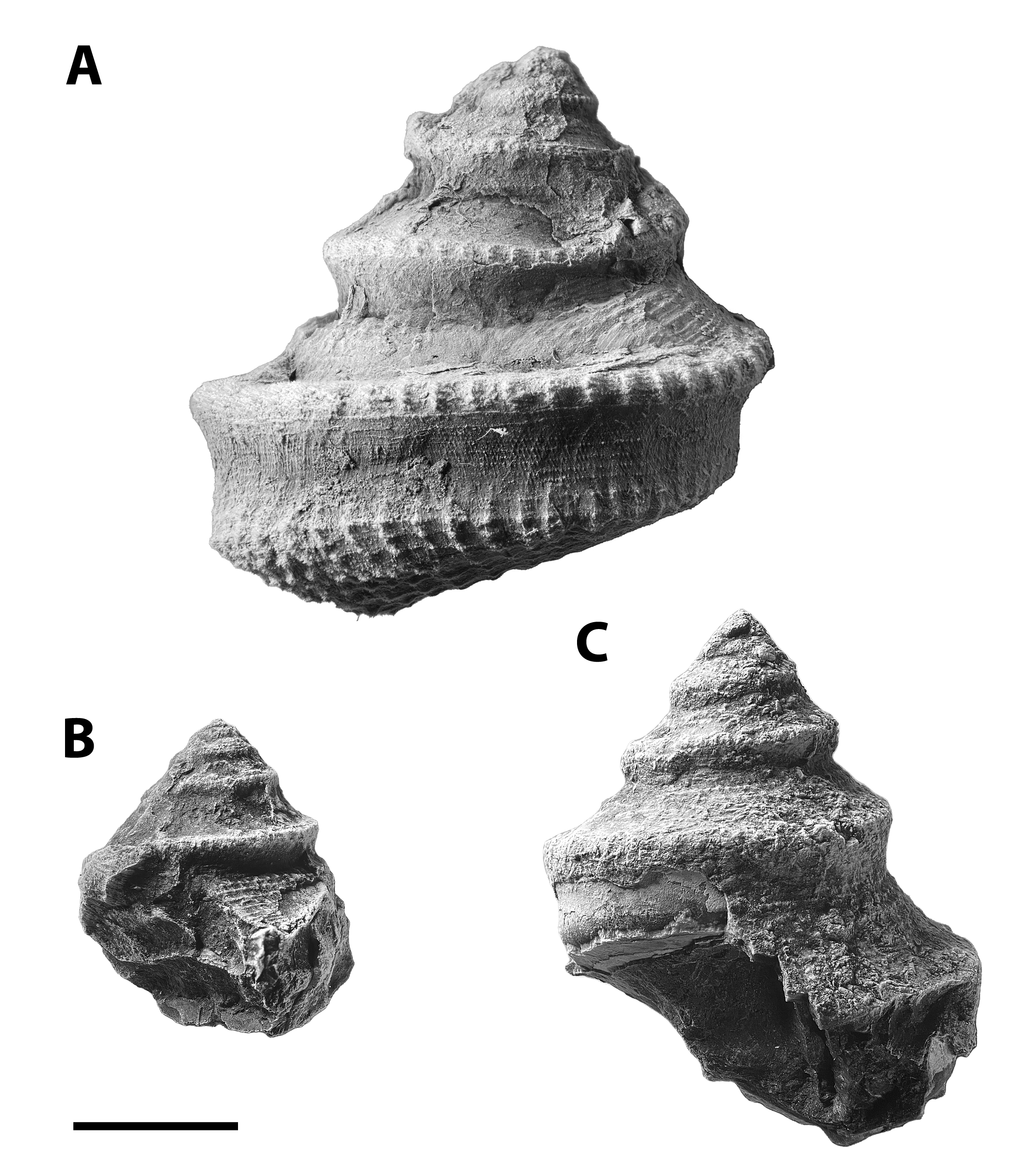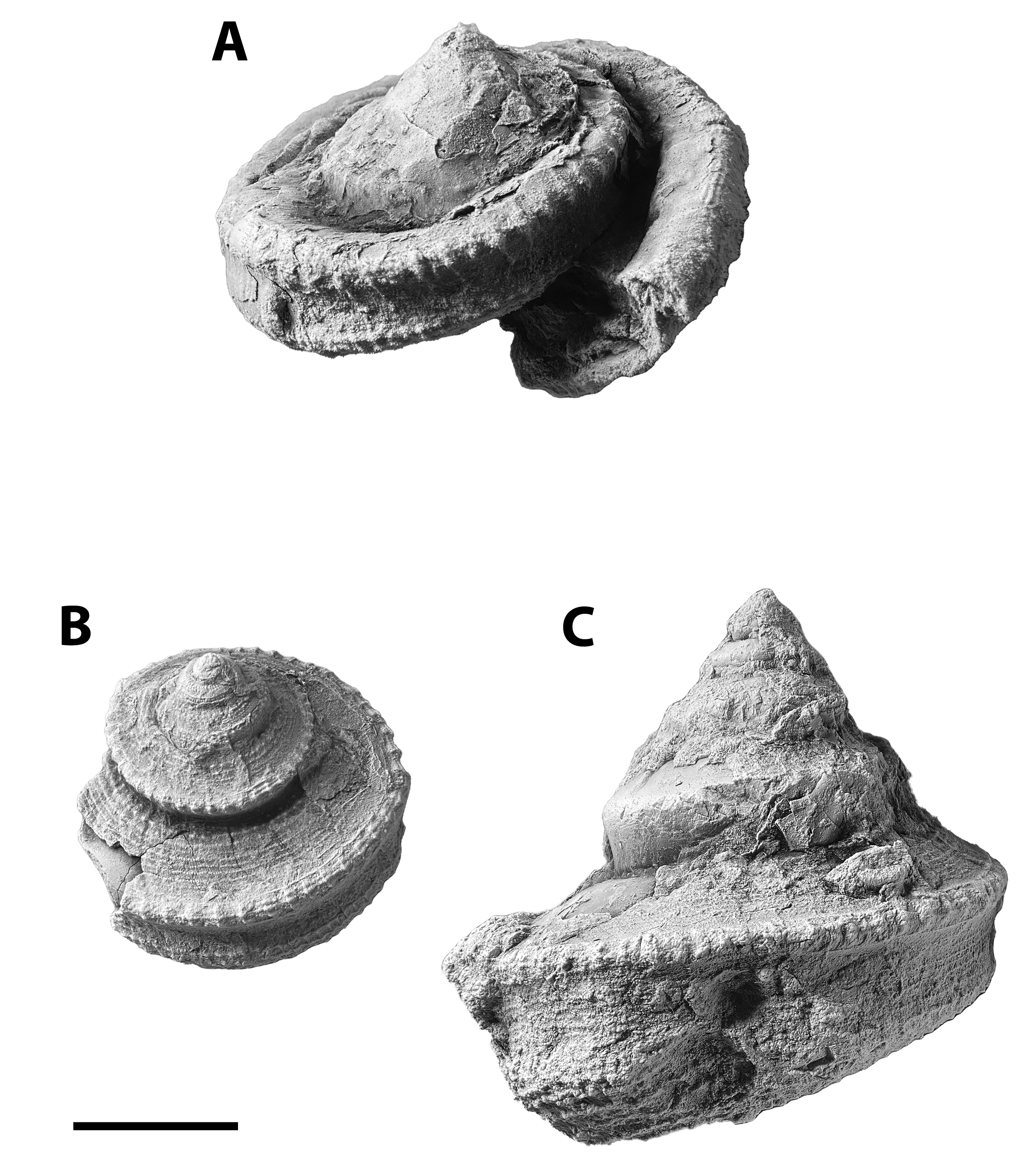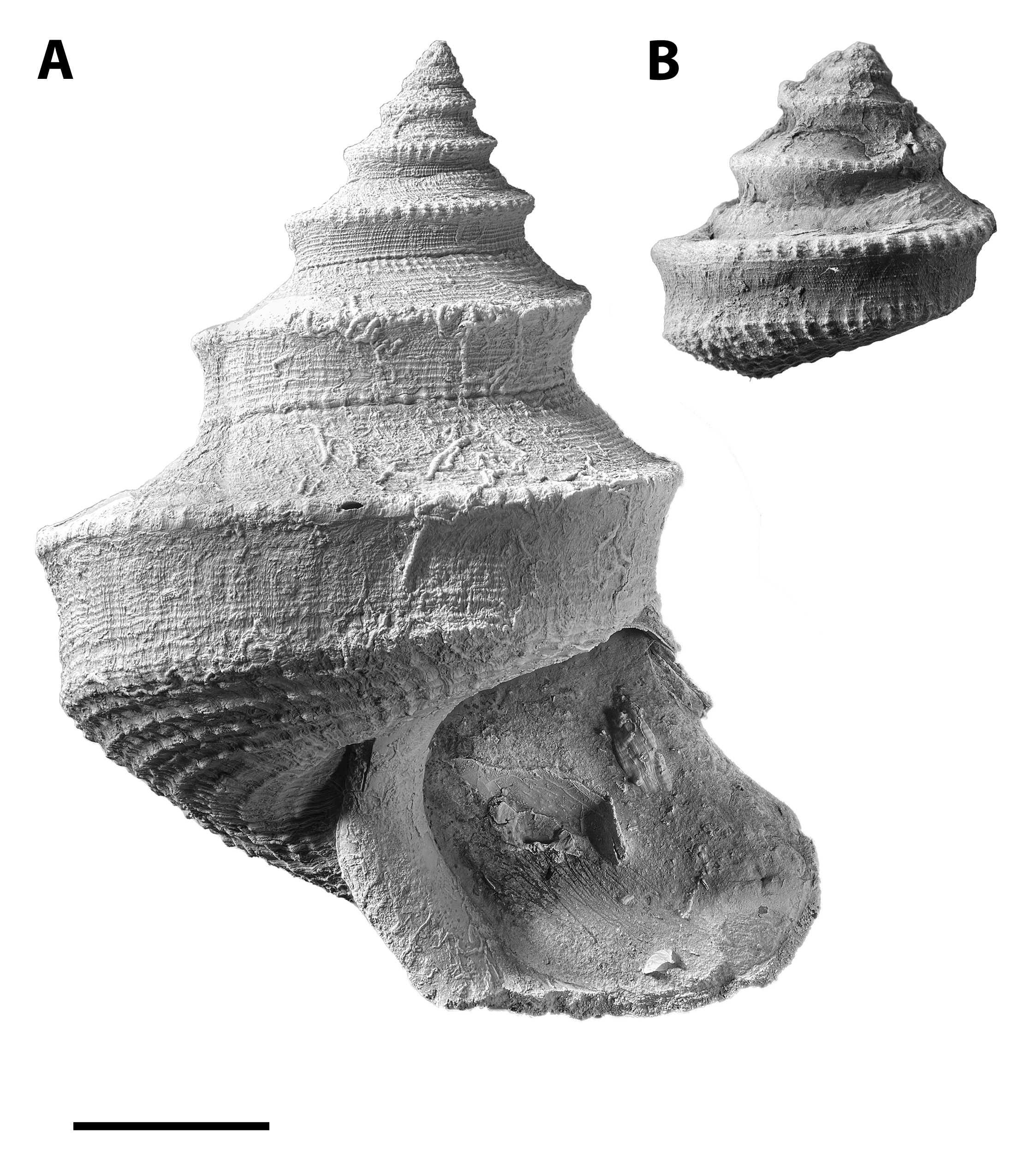Order Pleurotomariida Cox & Knight, 1960
Superfamily Pleurotomarioidea Swainson, 1840
Family Phymatopleuridae Batten, 1956
Genus Worthenia de Koninck, 1883
Species tabulata (Conrad, 1835)
Worthenia is a beautiful gastropod. It is trochiform with a turreted spire. However, the convex ornamented selenizone on the carina’s upper lip (the spiral shell ridge) is not immediately apparent to someone from afar. The ornament consists of a row of nodes sandwiched between a ridged boundary that obscures the growth lines of the selenizone. Shells with this zone can have visible growth lines resembling a half-moon (selene = moon), but these are unapparent in Worthenia.
Conrad named two species of gastropods in 1835 that retain validity. One is called Plectostylus primogenius (today known as Strobeus primogenius [see page XX]), and the other is Turbo tabulatus. Shortly after, Conrad (1942) assigned T. tabulatus to a new genus, Pleurotomaria. Such an assignment was trendy among other taxonomists, eager to place Paleozoic and Mesozoic gastropods with a selenizone under Pleurotomaria, a name erected for a Lower Jurassic gastropod.
Later, de Koninck (1883) moved the species from the now-crowded Pleurotomaria, recognizing several unique features. He created a new name, Worthenia, placing Turbo tabulatus Conrad 1835 as the type species. Most of the distinct features centered around the selenizone, including the width compared to the shell, ornament within, and position on the whorl.
Knight et al. (1960) placed Worthenia under the subfamily Ruedemanninae Knight, 1956, which belongs to the family Lophospiridae Wenz, 1938. Yet, this assignment has been controversial because of competing morphological comparisons. Recently, Karapunar et al. (2022) placed Worthenia under the Phymatopleuridae Batten, 1956, as Girty (1912) noted that the early whorls of Phymatopleura appeared similar to Worthenia.
Specimens of Worthenia are uncommon in the Pine Creek limestone of Manor Township and absent (so far) in the Brush Creek limestone of Parks Township. The first fossil the author recovered at SL 6445 was a specimen of Worthenia lying in the talus, but recovery is limited to less than a dozen in three years of searching. Most examples lack correct morphological dimensions, but the details are striking after cleaning.



References
- Batten, R. L. (1956). Some new pleurotomarian gastropods from the Permian of west Texas. Journal of the Washington Academy of Sciences. 46(2): 42−45.
- Conrad, T.A., 1835, Description of five new species of fossil shells in the collection presented by Mr. Edward Miller to the Geological Society. Transactions of the Geological Society of Pennsylvania 1(1):267-270
- Cox, L. R., and Knight, J., B., 1960, Suborders of the Archaeogastropoda. Proceedings of the Malacological Society of London 33:262-264
- de Koninck, L.G., 1883, Faune du calcaire carbonifère de la Belgique, 4e partie, Gastéropodes (suite en fin). Musée Royale d’Historie Naturelle Belgique Annales, Série Paléontoloque 8:1-240
- Swainson, W. (1840). A treatise on malacology; or the natural classification of shells and shell-fish. Longman, London, viii + 419 pp.

Late Carboniferous Fossils from the Glenshaw Formation in Armstrong County, Pennsylvania
Preface | The Photographic Process
Localities: Locality SL 6445 Brush Creek limestone | Locality SL 6533 Pine Creek limestone
Bivalvia: Allopinna | Parallelodon | Septimyalina
Cephalopoda: Metacoceras | Poterioceras | Pseudorthoceras | Solenochilus
Gastropoda: Amphiscapha | Bellerophon | Cymatospira | Euphemites | Glabrocingulum | Meekospira | Orthonychia | Patellilabia | Pharkidonotus | Retispira | Shansiella | Strobeus | Trepospira | Worthenia
Brachiopoda: Cancrinella | Composita | Isogramma | Linoproductus | Neospirifer | Parajuresania | Pulchratia
